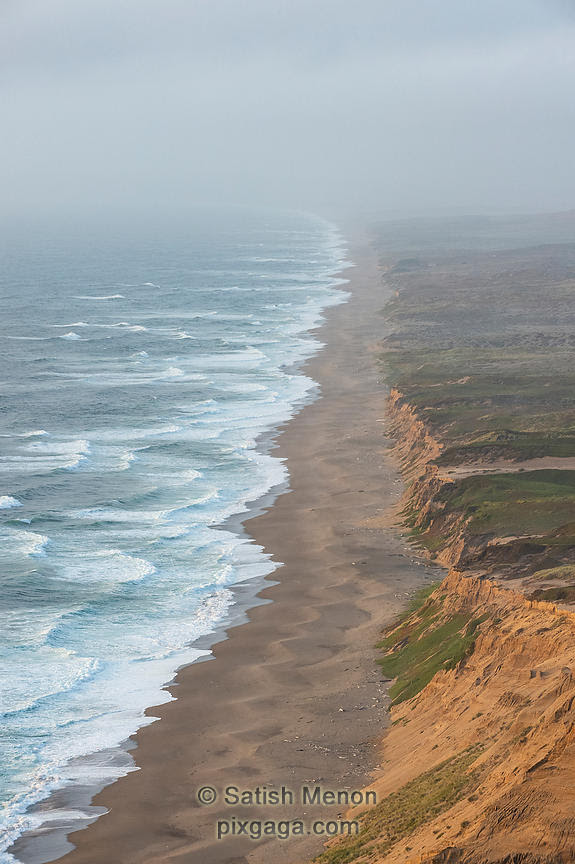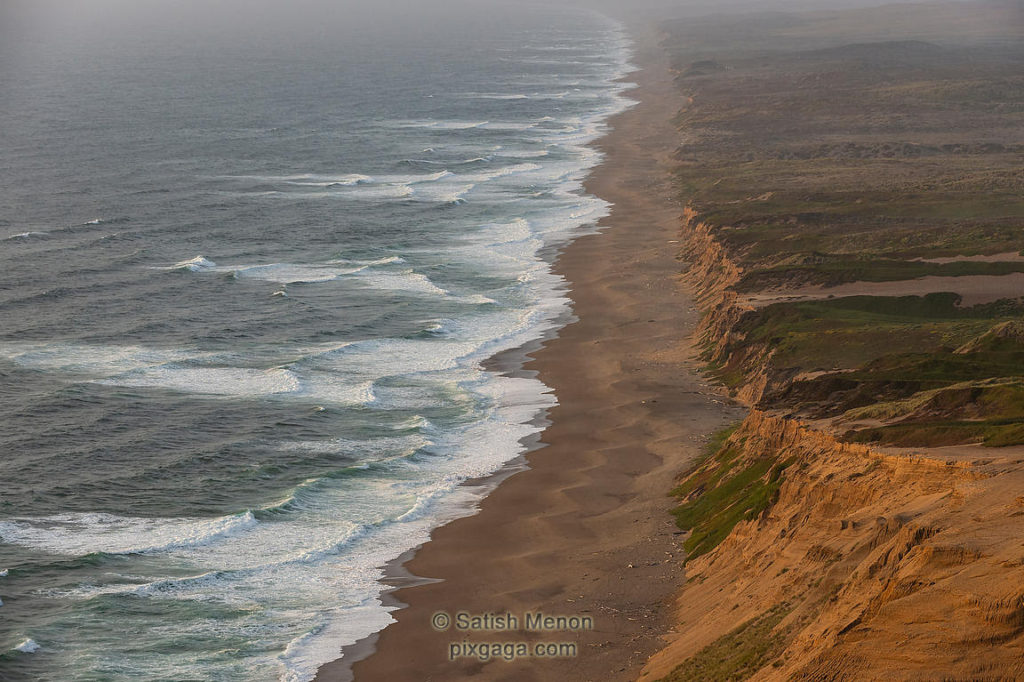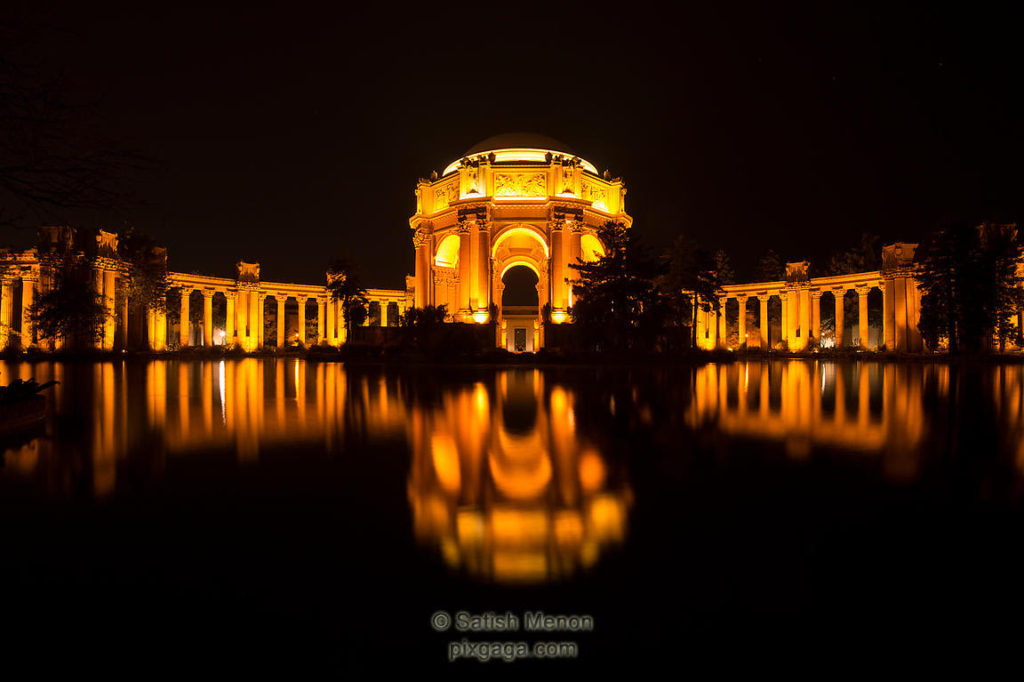The same location as yesterday. Vertical composition.

Buy a print – Link
Register for my next webinar or ask a question for potential inclusion in my upcoming ebook, “101 tips for Digital Travel Photography” – Link
Award winning photographer, Satish Menon, selling fine-art prints and sharing photography insights with other photography enthusiasts.
Today and tomorrow, I shall present a couple of photos from Pt. Reyes National Seashore in California. I was at the top of a mountain viewing this scene. It was an extremely windy day and despite my sturdy tripod, my Nikon D4S with Nikkor 70-200mm f2.8 lens vibrated a lot. I could see the view vibrating as I looked at it through my eyepiece. I set my exposure at f/8 at 1/1000 s, to get it sharp. This required an ISO of 640, which is highly unusual for a landscape made by me. https://www.pixgaga.com.

Buy a print – Link
Register for my next webinar or ask a question for potential inclusion in my upcoming ebook, “101 tips for Digital Travel Photography” – Link
If you have visited San Francisco, CA, this is definitely one place to see, especially at night.
If you are a photographer, who has visited San Francisco, I think this is a must have in your portfolio.
The technique to make such a photograph is pretty straightforward. 16mm lens on a full frame DSLR. Mount on a firm tripod. ISO 100. f11 @ 1 minute exposure.
Given the symmetry involved in this scene, I emphasized the symmetry by centering it.

Buy a print – Link
Register for my next webinar or ask a question for potential inclusion in my upcoming ebook, “101 tips for Digital Travel Photography” – Link
I went to Rainbow Falls in California’s Eastern Sierra over the July 4th weekend. My first visit to the falls was in the middle of the day, with my family. Since the sun was shining into the falls at that time of the day, it formed a rainbow at the base of the falls upon which it is named. From a photographer’s perspective, the light was too harsh and no good waterfall image could be produced at that time.
I came back the next day, early enough before sunrise, to get the light right for a waterfall image. While the grand view from the standard vista point was great, it did not offer anything satisfying for me. For example, one search for Rainbow Falls, CA in images.google.com, yields several images of the standard view. I began by making a standard view image as well. Here it is. It does not impress me and therefore it has not been published in my web gallery.

Rainbow Falls, CA. (Standard View from Vista Point)
After getting the standard shot out of the way, I started exercising my visual imagination to make additional more satisfying images. Using my 70-200mm f2.8 lens at 200mm, I made a frame that was later cropped to this 1:3 format. This is a section of the waterfall towards the right side of the view from the vista point. To me, this image is a compelling composition. It has a series of waters falling from the top right into the bottom one-thirds of the image, where there is a diagonal flow of water from the left to the right. There are distinct shapes and flows in the top, middle and bottom one-thirds of the image that grabs attention.
Another shot using my 70-200mm f2.8 lens with 2x teleconverter (set at effective 400mm), is shown below.
This one shows a single strand of waterfall to the right of the image counter-balancing the diagonal cascade going left to right.
Another 400mm shot is shown below.
This one emphasizes the wall of water towards the right of the view from the vista point. The wall of water and its shapes/texture is counter balanced by the rocks at the bottom right.
As I wrapped up my shoot, I used the same 400mm setup to frame a couple of shots of the runoff from the falls.
This one showcases the whites from the falls runoff counterbalanced by the green grass on the shore. I saw this first and upon closer examination, I found a dead fallen tree bark whose branches pointed towards these whites. I thought that they formed a perfect set of complementary subjects to juxtapose in an image. Here it is.
Notice how the shapes in the branches of the dead tree bark, mirrors the shapes of the whites (the branches pointing one way and the whites following it).
Using this post, I want to encourage more photographers to look beyond the obvious. The first thing that you see when you get to location should be photographed, but one should not stop there. The better photographs come from staying there, a bit longer, and looking for what else is there, or, how else the scene may be photographed. Changing viewpoints and changing lenses are the simple exercises to get you started on the road to eventually change what you see and see more.
When I come across something interesting to photograph, I do not click one image of an obvious composition and walk away. I start with the obvious compositions, but I keep refining and altering my position, until I have attempted a lot of variations. Very often, when I review my work later in Lightroom, I find that my later refinements bring out the fine keepers.
I photographed a waterfall along Fern Creek in Muir Woods, CA, last week. Let me illustrate how I worked the composition in that case.
The following image is the first image I made when I saw the waterfalls.

The first image made of the waterfalls
This first image has a number of branches coming in the way of the view of the falls. Clearly, I don’t like it and try another shot by moving a bit. The next image shown here removes a bunch of the blocks and the view is somewhat clear. However, one fern leaf snuck into the lower end of the image. It is important to understand that I was viewing through the viewfinder on my f2.8 lens, but I was shooting f22. This causes this fern leaf to be almost invisible in the viewfinder, due to shallow depth of field, but it shows up in the f22 image. Plus there is a brown twig in the lower left of the image. I see all this in my LCD panel and decide to try again.

The next image made
I moved and made the following image, in an attempt to remove distracting blocks to the view of the falls. The following image has problems though. Some other brown dried leaf has now snuck in, plus the brown twig on the left is still there.

The next image made
After some more adjustments to my tripod position, I made the following image. This composition is almost OK, but, during the 30 second long exposure, I got distracted talking to my kids in the nearby trail and accidentally touched/hit the tripod during the exposure. Observing the top edge of the rock, just after the falls, I realize that it is not exactly sharp, due to the accidental hit to the tripod during the exposure.

The next image made
I try again, this time getting a sharp image, with minimum distractions.

The next image made
Taking one of the final frames during these series, as my base, I decided to use Lightroom to crop it and develop further. FInally, I removed some branches and twigs to clean it up further. The final result is as shown below.

My final finished image
Many beginners ask me what I mean, when I say “work the composition more”. I decided to illustrate using this example.
Let me know if you have any feedback on this post.
I visited the coast along Pacific Grove one Sunday morning a couple of weeks back. It was a cloudy day with a slight drizzle. I wanted to make photographs anyway. Usually, I look for landscapes with my wide angle lens, composing near-far images. Unfortunately, I was just beginning to use my Nikon D700, for which the required tripod L-plate was back-ordered. I was left with only one choice, my 70-200 telephoto (this lens is mounted on the tripod and the camera hangs off of it). It was an interesting constraint to work with. After walking around for a while, I figured out a spot from which I could see the surf hitting the rocks along the coast forming interesting patterns as the water washed over the rocks. I decided to photograph these patterns. I shot about 200 frames that morning, each one attempting to time the flow of the water just when interesting patterns occurred. Furthermore, I decided to make long exposures to capture the sense of movement. To achieve this, I set the ISO to 200 (the native ISO of my Nikon D700), the aperture to f22 (to get the longest shutter speed possible) and let the camera operate in aperture priority mode. The shutter speeds as determined by my camera ranged from 1/6 s to 1/13 s during my whole shoot. The 70-200mm f2.8 lens was mounted on my RRS BH-55 Ballhead on my Gitzo 1340 Tripod. Furthermore, I had my GPS-1A unit on to tag the GPS co-ordinates to my images and I was triggering using a cable release. Here are a few images from the session, post processed using Lightroom 5 and Google’s Silver Efex Pro 2.

Surf, Pacific Grove, CA, USA

Surf, Pacific Grove, CA, USA

Surf, Pacific Grove, CA, USA

Surf, Pacific Grove, CA, USA

Surf, Pacific Grove, CA, USA

Surf, Pacific Grove, CA, USA
Out here in Northern California, there are wonderful fall colors, wherever you look. You simply cannot miss it. What do you think about these three images, that I made last Thursday?

Fall leaves, Milpitas, CA, USA

Fall leaves, Mipitas, CA, USA

Fall leaves, Milpitas, CA, USA
I made the first image at 6:57 AM. I made the second image at 7:19AM. I made the last image at 7:21AM. All on the same day.
I am reminded of a lesson that John Shaw taught us in his January 2011 seminar in Santa Clara, CA. “Don’t be late to work”.
We still find fall colors in San Jose, CA. Just last week, I found this Aspen tree in a grocery store parking lot and made this shot. Tomorrow, I am headed to the Lake Tahoe area for skiing. Hope to find a totally different kind of scenery there. Will post images from that trip soon.
In sharp contrast to my previous post (on black and white), this is an image that cannot be effective in black and white.